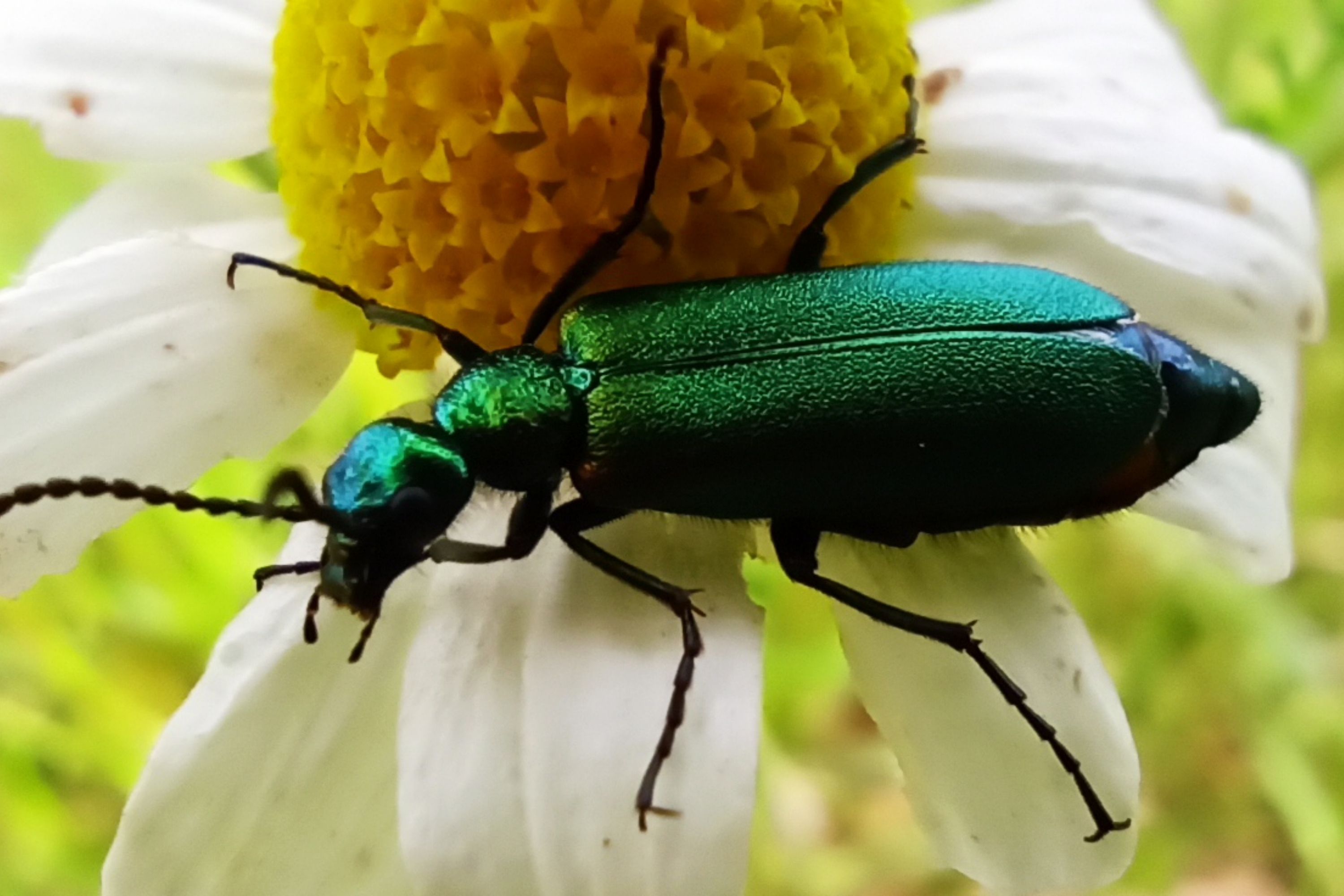Spanish fly beetle
(Lytta vesicatoria)

Description
Lytta vesicatoria is an aposematic emerald-green beetle in the blister beetle family (Meloidae). It is distributed across Eurasia. The species and others in its family were used in traditional apothecary preparations as "Cantharides". The insect is the source of the terpenoid cantharidin, a toxic blistering agent once used as an aphrodisiac. The substance has also found culinary use in some blends of the North African spice mix ras el hanout. Its various supposed benefits have been responsible for accidental poisonings including that of Simón Bolívar. The adult Spanish fly is a slender, soft-bodied metallic and iridescent golden-green insect, one of the blister beetles. It is approximately 5 mm (0.20 in) wide by 20 mm (0.79 in) long. The female lays her fertilised eggs on the ground, near the nest of a ground-nesting solitary bee. The larvae are very active as soon as they hatch. They climb a flowering plant and await the arrival of a solitary bee. They hook themselves on to the bee using the three claws on their legs that give the first instar larvae their name, triungulins (from Latin tri, three, and ungulus, claw). The bee carries the larvae back to its nest, where they feed on bee larvae and the bees' food supplies. The larvae are thus somewhere between predators and parasites. The active larvae moult into very different, more typically scarabaeoid larvae for the remaining two or more instars, in a development type called hypermetamorphosis. The adults emerge from the bees' nest and fly to the woody plants on which they feed.
Taxonomic tree:







